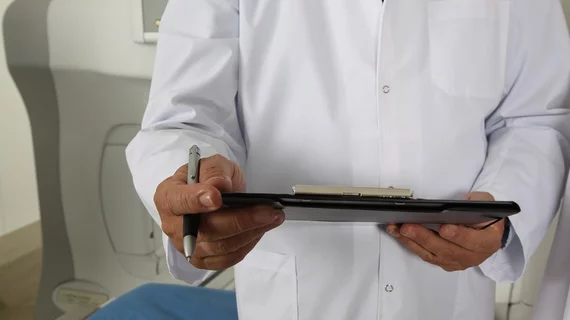A significant amount of imaging orders in emergency settings are inappropriate
Imaging exams ordered in emergency departments are often inappropriate and do not yield any significant findings, a new analysis suggests.
The study, published in Emergency Radiology, examined all ultrasound, CT and MRI exams ordered in the emergency department of a large academic center over a three-month period and found that, in some cases, more than half of the requests were inappropriate. Of those misguided requests, nearly two-thirds unearthed zero suspicious findings.
The team used the American College of Radiology Appropriateness Criteria to guide their determinations, and then compared the final report to the ordering providers’ initial clinical suspicions.
Nearly 60% of orders included in the analysis were deemed inappropriate, with the highest rate being seen in ultrasound, nearly 60% of which were not compatible with their initial clinical suspicion. MRI orders were next at 33%, followed by CT orders, at 29%.
Compared to inappropriate orders, appropriate orders were three times more likely to result in findings compatible with providers’ initial clinical suspicions.
A general lack of awareness pertaining to ACR appropriateness criteria could be a driving factor behind the misguided requisitions, the authors suggested.
“Despite the wide availability and free access to the ACR Appropriateness Criteria, a lack of awareness likely contributes to their underutilization, resulting in not only overuse of imaging but also suboptimal modality choices, often leading to multiple orders during the same visit,” senior author Bruno Hochhegger, MD, PhD, of the University of Florida, and colleagues explained, adding that concerns about missing something underlying and the resultant malpractice consequences could also be to blame.
Regardless, inappropriate orders are problematic for multiple reasons, the group continued.
“Besides the low diagnostic yield, inappropriate orders also contribute to the increasing healthcare cost burden and expose patients to unnecessary ionizing radiation."

